How to Calculate the True Cost of AP Automation
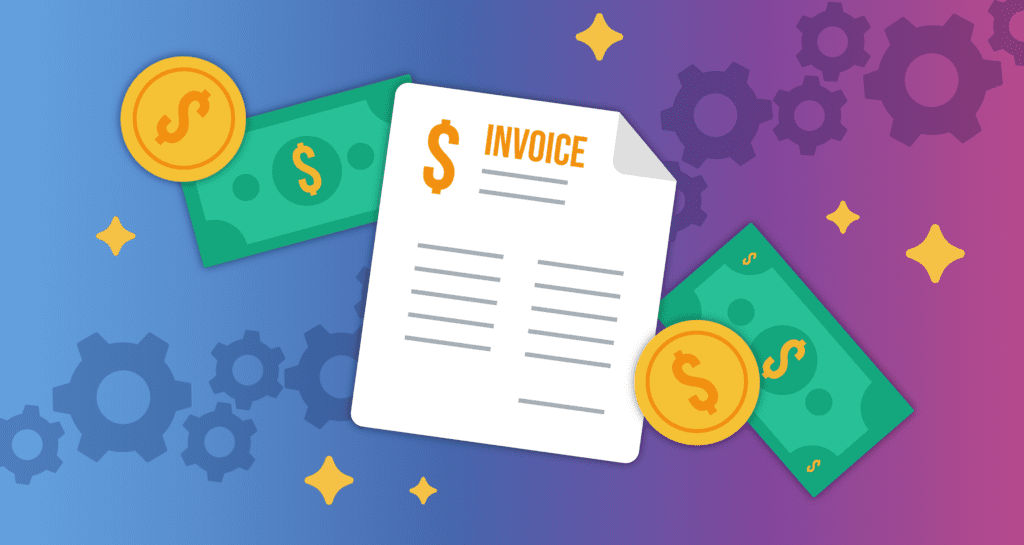
Automation can help your business perform more tasks in less time with fewer errors. Firms use automation to scale the business and to stay competitive, but every new technology requires an investment of time and money. How long does it take to earn back your investment, measured by higher revenue and/or cost savings?
This discussion explains the cost to process accounts payable (AP), the challenges of using manual processes, and how long it may take to recover your investment in AP automation.
How Much Does AP Automation Really Cost?
Accounts payable processes can be labor-intensive, error-prone, and expensive. Invoice processing is a prime example – it’s one of the most costly and time-consuming tasks facing most AP departments. Suppose your business relies on manual paper-based invoice processes. In that case, you’re not alone: In our 2021 survey, AP Today: Bottlenecks, Benchmarks, and Best Practices, over 40% of businesses reported that they still process invoices manually.
AP automation software streamlines invoice processing tasks, like entering, coding, verifying, and routing invoices, in order to save your business time and money. The challenge for CFOs is estimating an accurate return on investment (ROI), which means:
- Understanding the current costs to process AP
- Determining the cost savings gained by using AP automation
- Calculating how long it will take to recover the cost of new technology through cost savings
This guide uses real-world accounts payable data to give you a simple yet powerful model to estimate these costs and benefits to make informed investment decisions.
We’ll start with a short refresher on invoice processing costs.
The Components of Invoice Processing Costs
Many invoice processing costs can be reduced by implementing an accounts payable automation solution. Assuming that the business does not use invoice processing software, the total invoice processing cost can be calculated using this formula:
(Total invoice processing cost = labor + paper processing and storage + errors + fraud + late payment fees + regulatory penalties)
In addition, slow invoice processing may damage your vendor relationships. Vendors rely on timely invoice payments, in order to cash flow their businesses, and late payments disrupt the cash management process.
If a vendor is repeatedly paid late, the company may not be willing to supply products or services to your business. Finding a new vendor that can supply a quality product at a reasonable price may be difficult to pin down, and you may have trouble meeting customer demand while searching for a new vendor.
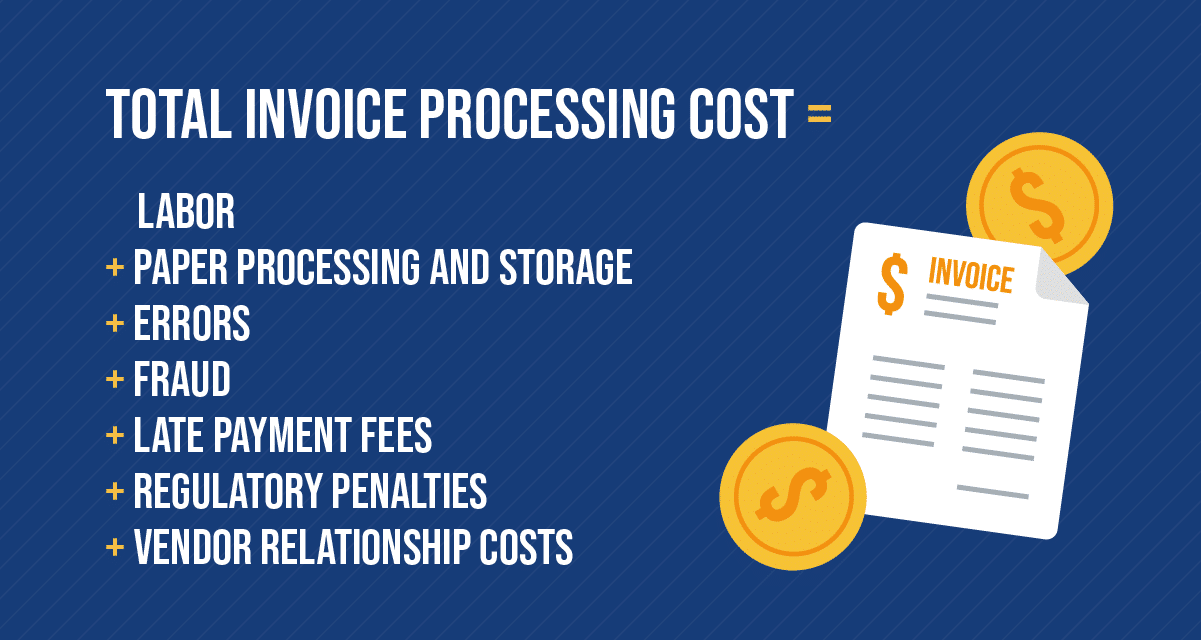
Let’s break out these components.
Assessing labor costs
Staffing costs comprise the total salaries and benefits of employees directly involved in the invoice processing workflow. Because employees may only spend part of their time on invoice processing, we’ll look at staffing costs at the hourly full-time equivalent (FTE) level.
Your invoice processing workflow may also include costs for employees indirectly involved in the process. For example, consider your approval process and how much time approvers spend reviewing and approving invoices, or how often senior employees need to manage invoice errors or fraud. Invoice automation can reduce staffing costs by reducing the time required to process invoices and freeing up employees to take on higher-value tasks.
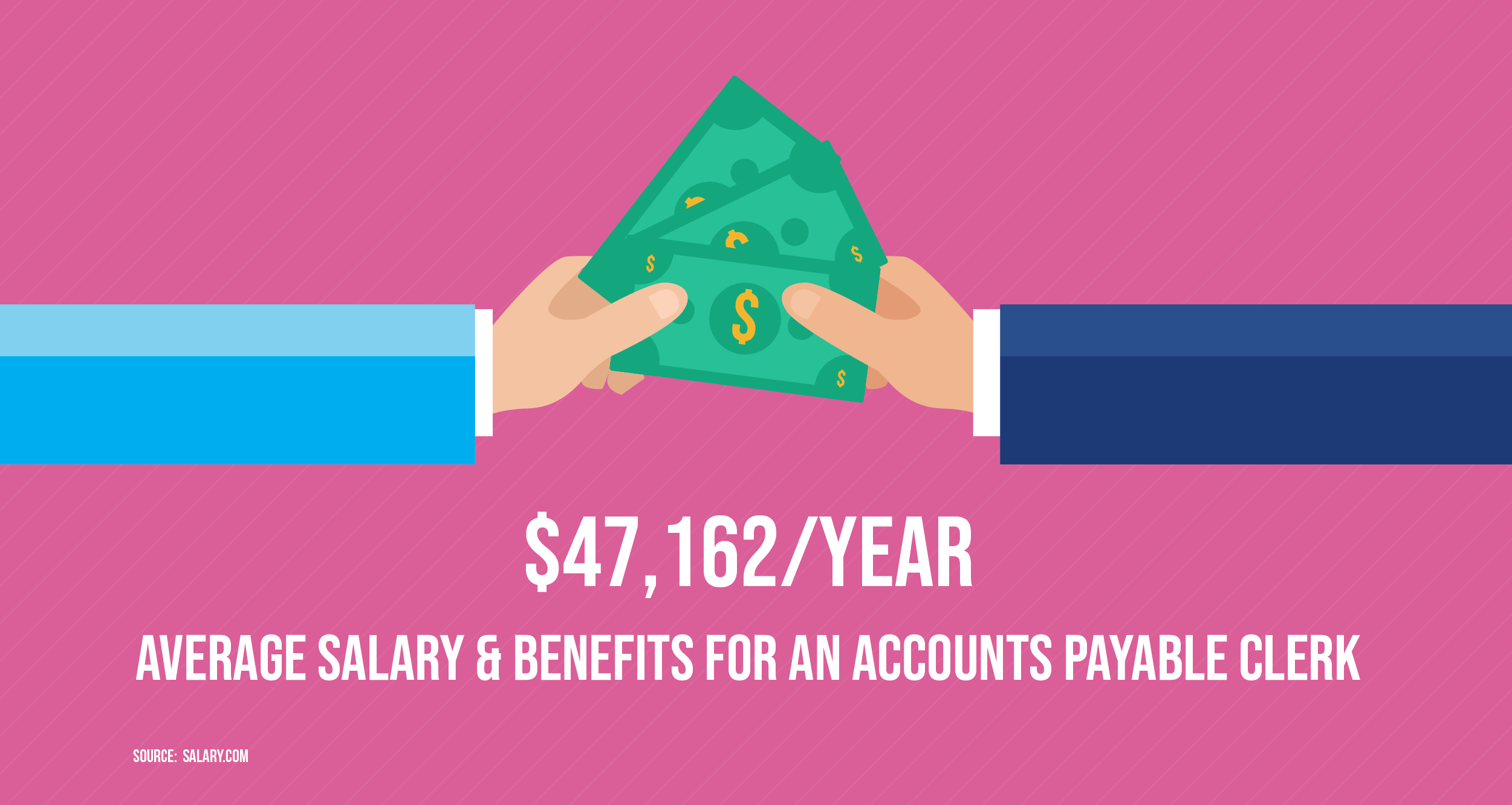
Including paper processing and storage costs
Manual paper-based invoice processing affects your accounts payable costs in two ways. First, manual processes are slow, reducing the number of purchase orders and invoices each employee can process. As your volume of invoices increases, you’ll need additional employees to handle the workload. Second, all that paper needs to be filed and stored somewhere, often in cabinets that take up expensive square footage.
The American Productivity and Quality Center (APQC) provides the number of invoices processed with and without AP automation in the chart below:
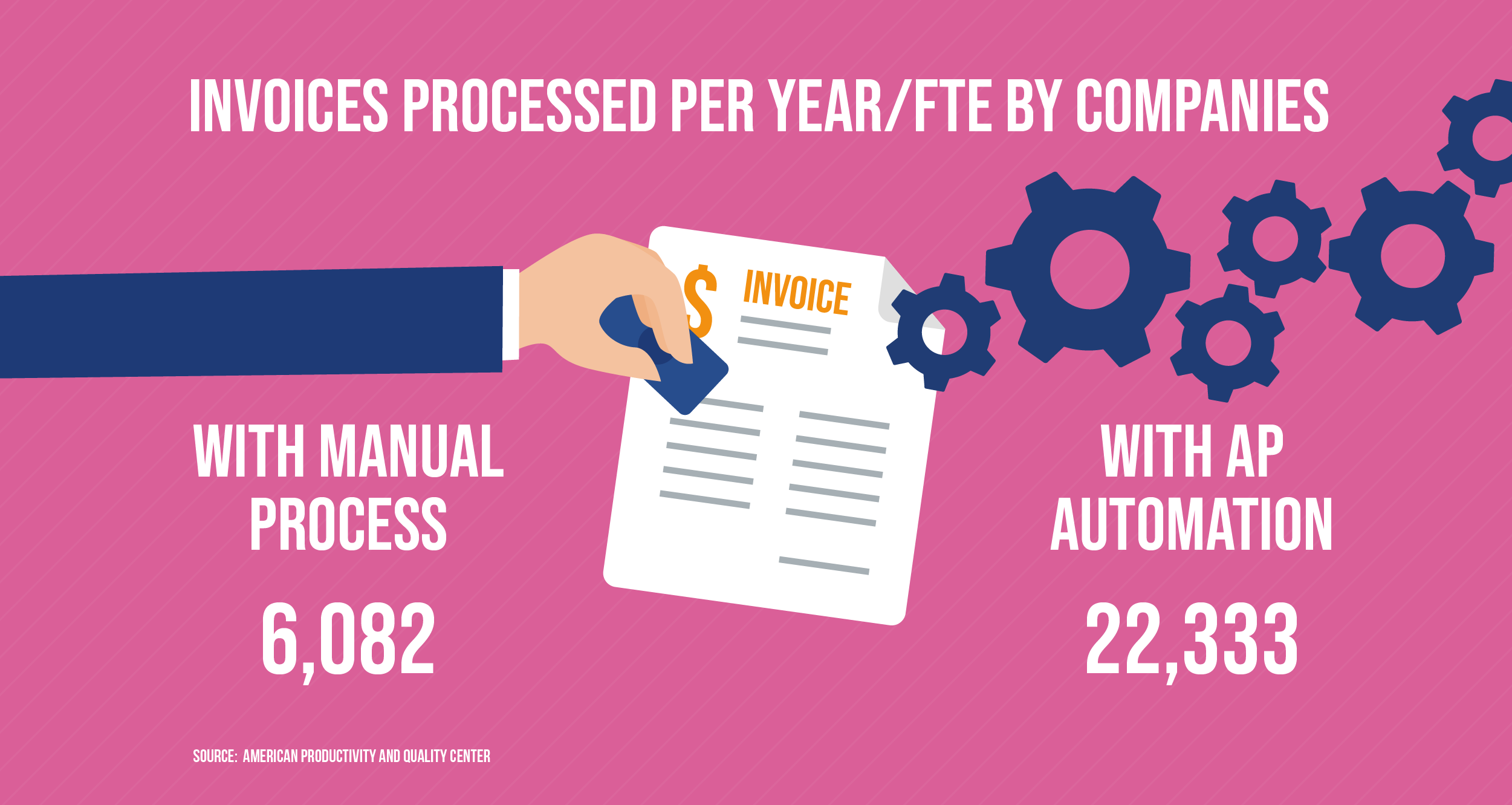
Considering human error and duplicate invoices
The Institute of Financial Management reports that 68% of businesses encounter errors on more than 1% of their invoices. Two types of human error can impact invoice processing costs. AP employees can miss an erroneous or duplicate invoice and send it forward for payment, or enter incorrect invoice data when they key in or code the invoice. If these errors aren’t caught and addressed before payment processing, they can substantially impact your company’s bottom line.
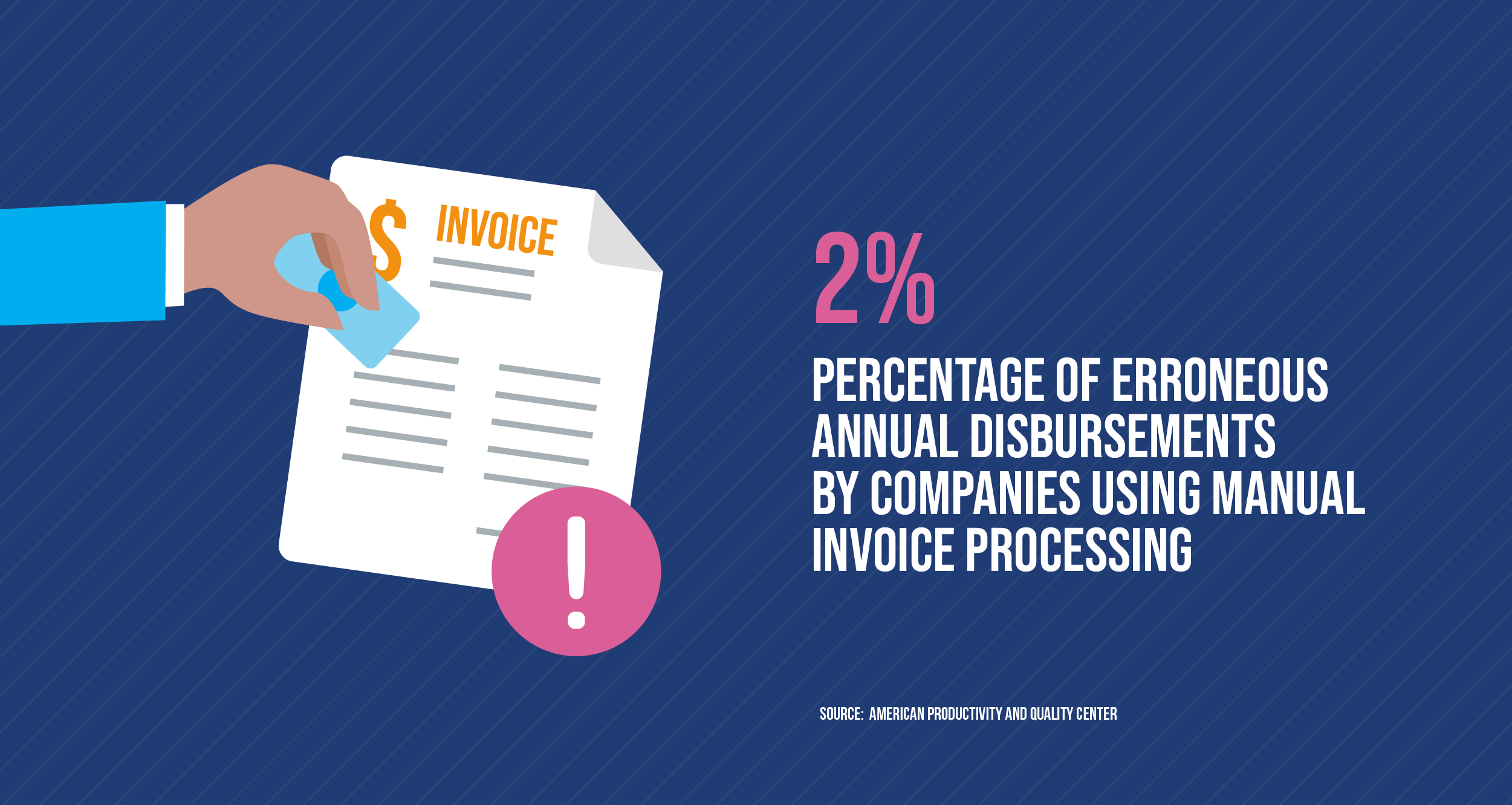
Dealing with fraud prevention
Fraud is one of the largest and potentially most expensive risks in accounts payable. AP automation helps prevent and detect fraud by enforcing internal controls, segregation of duties, and by providing full real-time transparency to AP workflows. The cost savings and reduction in headaches for any business can be significant.
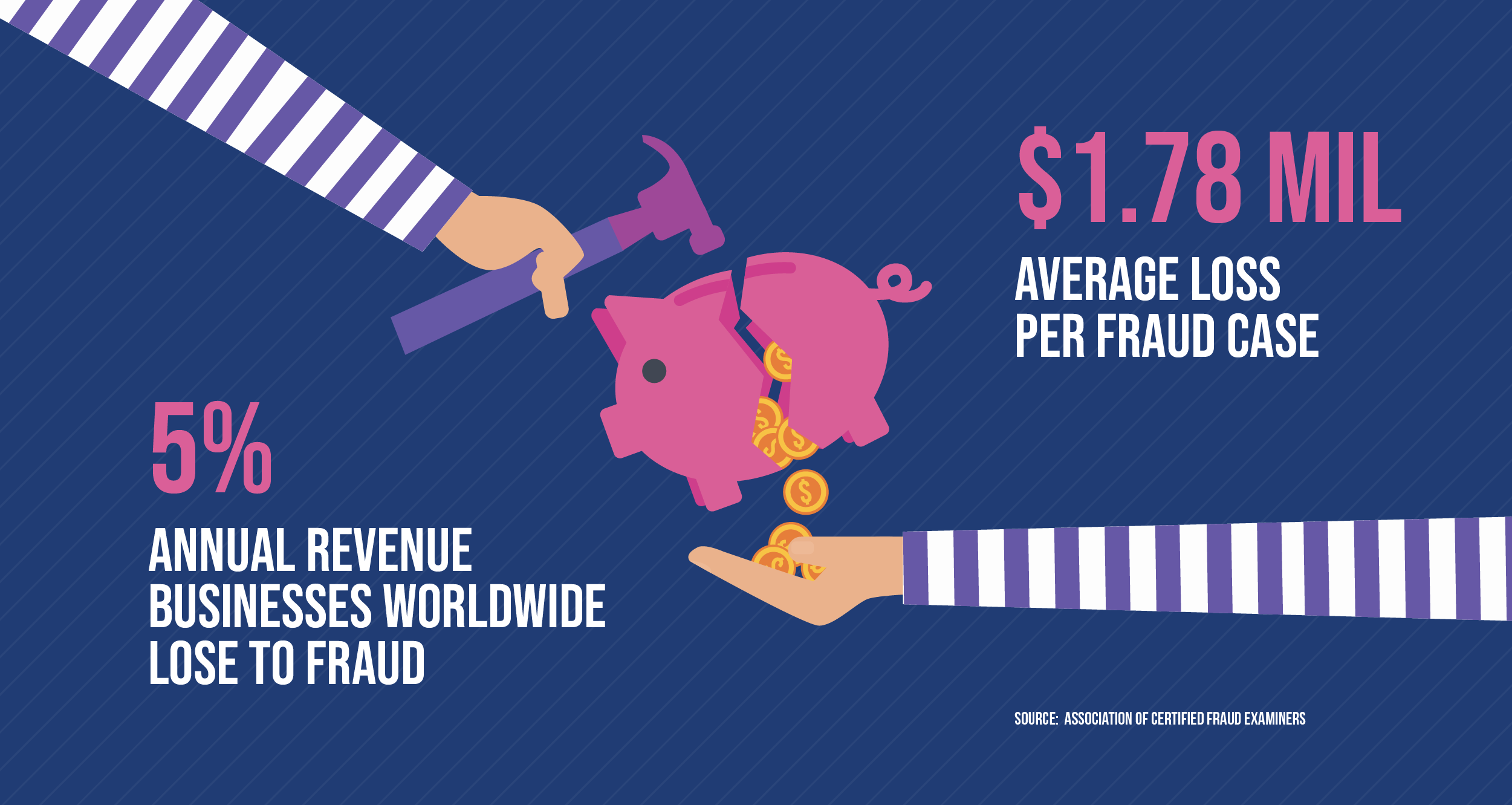
Incurring late fees
Late payments can result in penalties from suppliers and reduced or discontinued early payment discounts. In AP Today: Bottlenecks, Benchmarks, and Best Practices, businesses reported that 32% of invoices take six days or longer to process, and 10% of invoices spend over 21 days in the processing queue. The results of a PYMNTS study are explained below.
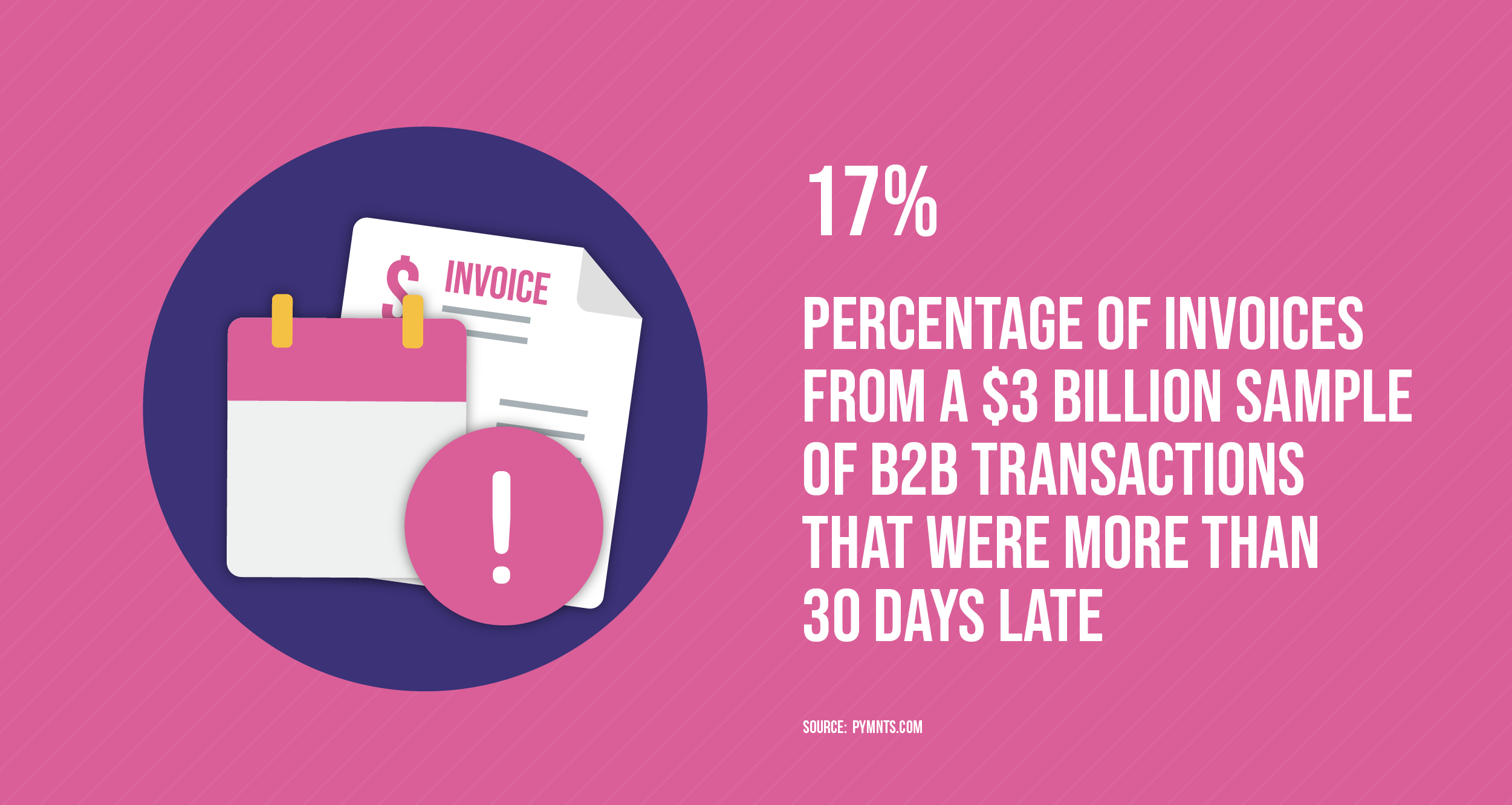
Addressing regulatory compliance
Internal controls in accounts payable include standard operating procedures, such as segregation of duties, to prevent fraud and errors and to ensure that the business complies with reporting and taxation requirements. It can be difficult for a company to enforce controls over manual processes, exposing the business to regulatory risk.
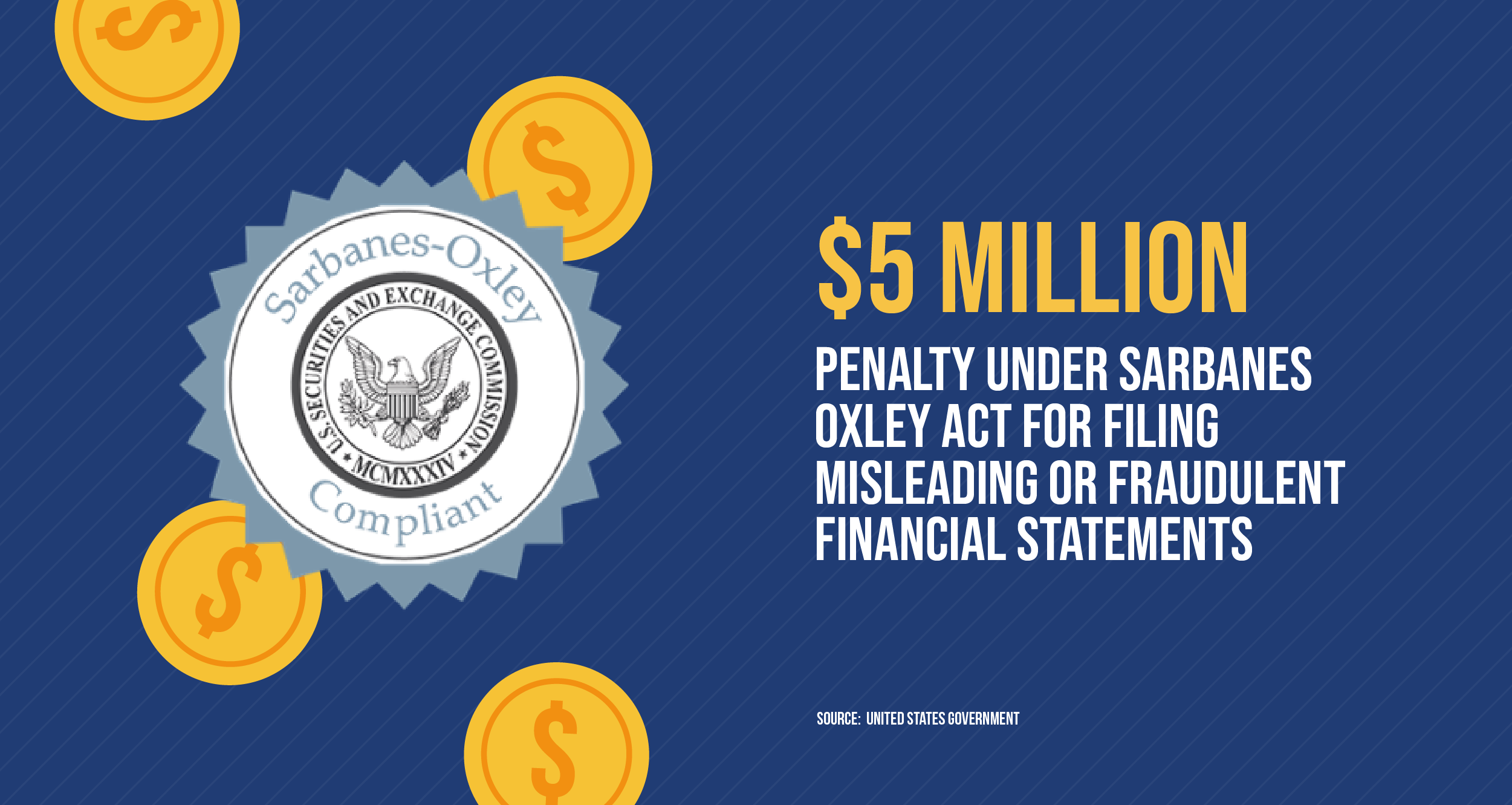
Shifting to the AP automation cost model
Now that we understand the components of invoice processing costs, we can build a simple model to estimate the potential savings from implementing AP automation. Labor cost savings are the primary direct and measurable benefit of automation, so we’ll start the model there.
For a deeper understanding of the “truth behind the numbers,” listen to Stampli’s Leaders of Modern Finance Podcast #31, where Jack McCullough of the CFO Leadership Council leads a discussion of the intangible elements of financial management.
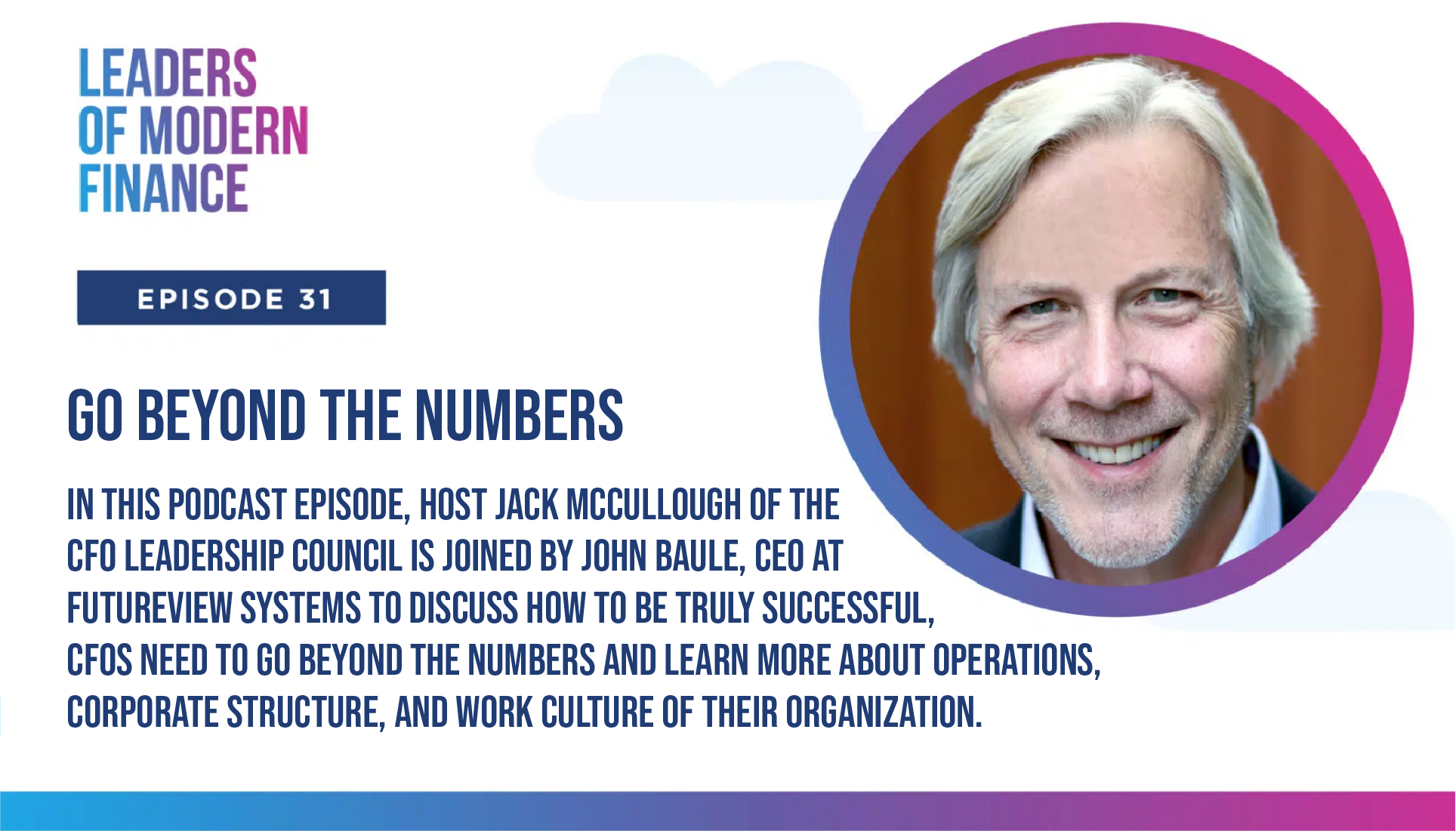
How to Build the AP Automation Cost Model
This AP automation cost model is based on real-world survey data on accounts payable process efficiency and costs. The first component of the model is to understand how many invoices companies are processing today.
Step 1: Calculating invoice processing efficiency
According to accounts payable benchmarking research by the American Productivity and Quality Center (APQC), the average FTE in accounts payable processes 10,853 invoices per year. Companies using manual data entry processes only process 6,082 invoices per year per FTE, and companies with fully-automated accounts payable processes handle 23,333 invoices per year per FTE.
You can use these numbers to get a sense of your own company’s invoice processing efficiency – just divide the total number of invoices your AP team processes each year by the number of hours employees spend processing invoices.
Step 2: Calculate the labor cost per invoice (manual process)
To calculate the labor cost of invoice processing, you need to calculate how many invoices an FTE can process per hour and how much that hour costs in wages and benefits. Using the industry standard of 2,080 hours per year for an FTE, we can easily calculate both metrics:
- Invoices per hour = Annual number of invoices processed/ 2,080 hours
- Cost per hour = Annual wage per FTE/ 2,080 hours
For our model, we will use the Salary.com data for annual FTE costs.
- Invoices per hour (manual process) = 6,082/ 2,080 = 2.92 invoices per hour per FTE
- Cost per hour (using manual or automated) = $47,162/ 2,080 = $22.67/hour
Note that you can multiply the annual number of hours spent on invoice processing by the cost/per hour to get a rough estimate of how much your business is spending on invoice processing every year. You can also divide the per-hour cost by the number of invoices processed per hour to get the per-invoice cost. For our model, the per invoice cost would be:
Per invoice cost (manual process) = (cost per hour) / (invoices processed per hour) = $22.67/2.92 = $7.75
This metric is a good benchmark for the average cost of manual invoice processing.
Step 3: Calculate time required and invoices per hour (automated process)
Once we know how many invoices each FTE can process per hour using a manual process, we can use the same calculations to estimate the time and labor cost savings from automation. Note that this is a platform-agnostic estimate – we are simply using the best-case invoice processing data from APQC to estimate the savings.
The underlying assumption is that whatever automation platform you choose will be implemented at least as well as the top companies.
Using the best-case invoice processing figure of 23,333 invoices per FTE/year, we can calculate the per-hour efficiency of each FTE by dividing the number of invoices processed by the number of FTE hours per year:
Invoices per hour with automation = 23,333/ 2,080 = 11.22
Under the best-case scenario, the real-world data predicts that automation makes each FTE 384% more efficient at invoice processing. The increase in invoices processed per hour is (11.22 / 2.92) = 3.84, or a 384% improvement.
Cost to process 6,000 invoices: Manual vs. fully automated process
Assume that a business needs to process 6,000 invoices annually. Here is the total processing cost, using the data above:
Cost using manual processing
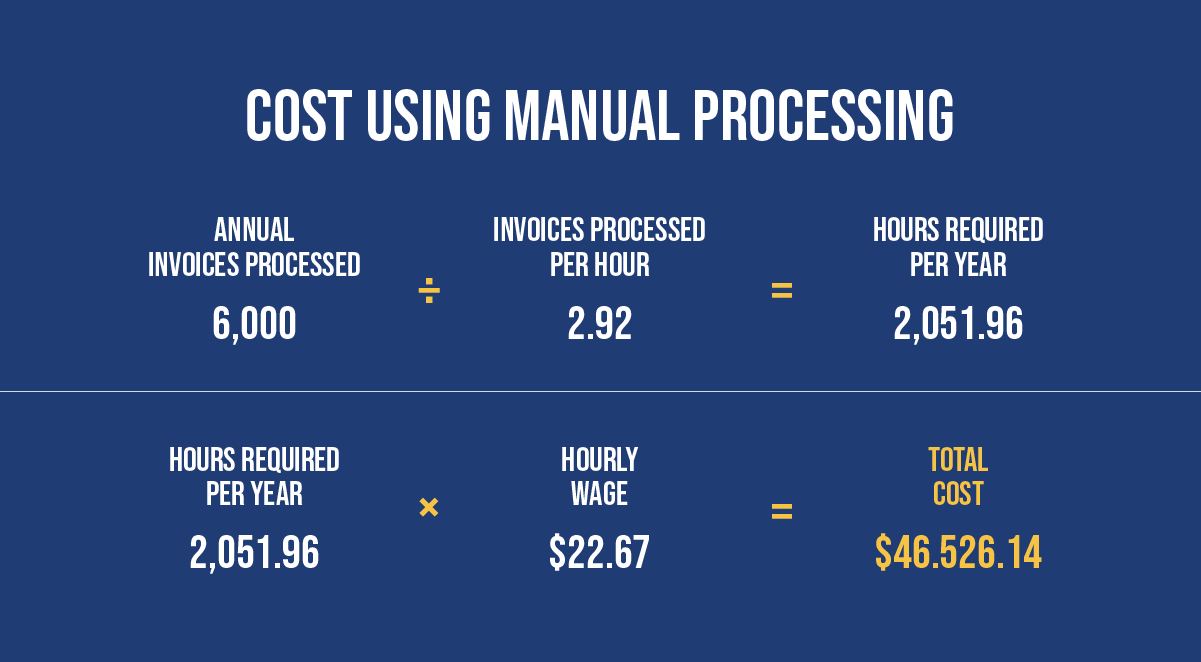
You can also calculate the total cost as:
($7.75 cost per invoice) X (6,000 invoices) = $46,526.14
Cost using AP automation
The total processing cost using automation is far lower:
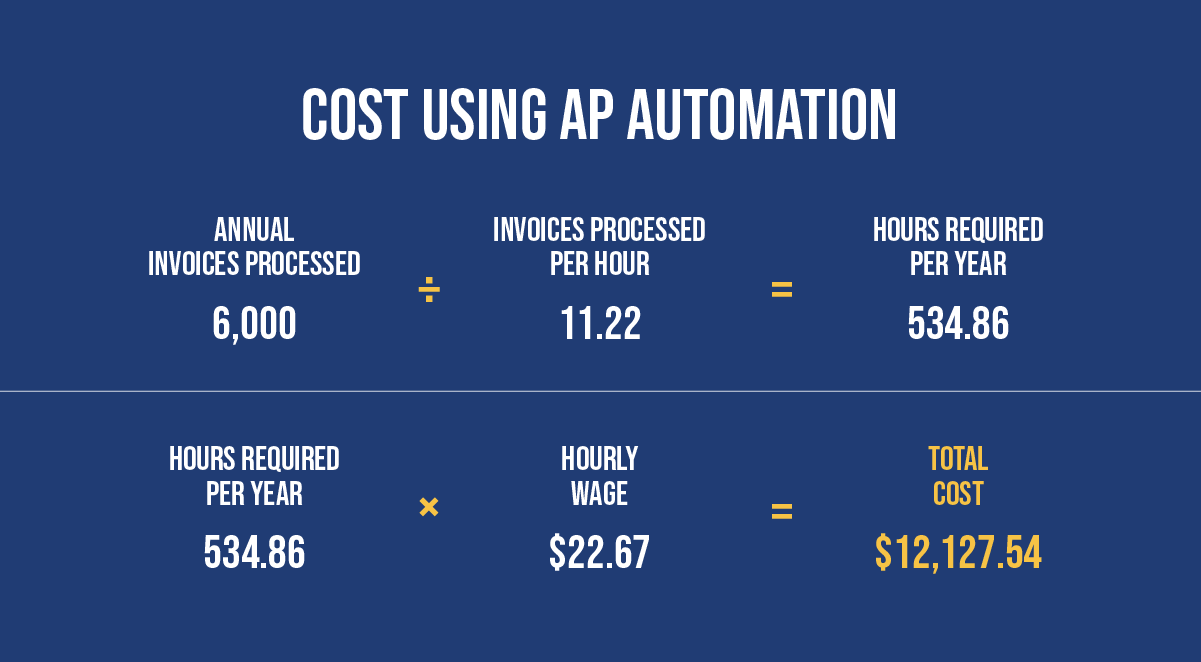
You can also calculate the total cost as:
($2.02 cost per invoice) X (6,000 invoices) = $12,127.54
The cost savings recognized by switching from a manual to a fully automated system is $34,398.60, or 74%.
Cost to process more annual invoices: Manual vs. fully automated process
The cost savings are even greater for businesses processing more invoices. An easy way to calculate the benefit is to use cost savings per invoice, which is:
($7.75 manual cost – $2.02 automated cost) = $5.73 cost savings per invoice
Here are the cost savings recognized when more invoices are processed:
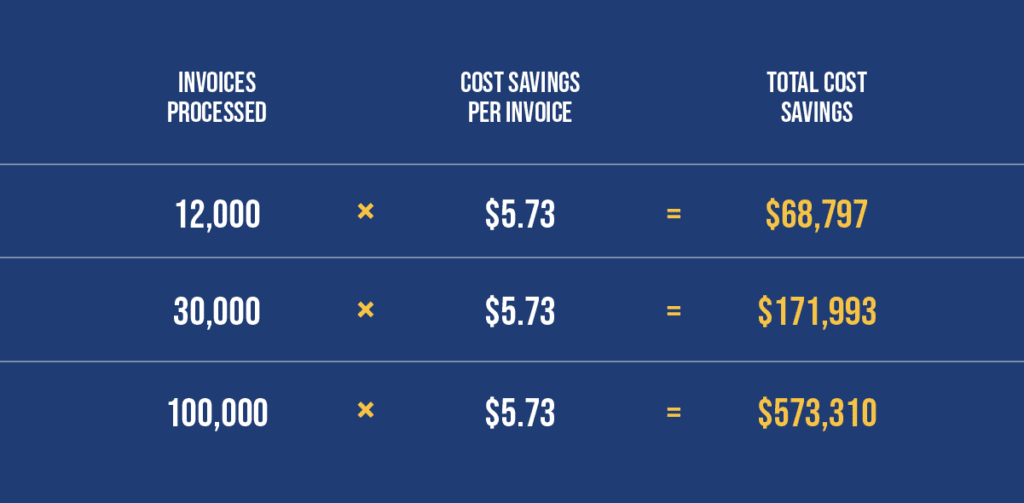
Keep in mind that this analysis only includes labor costs for the AP processor. The total cost savings also includes:
- Paper processing and storage
- Errors and potential fraud
- Late payment fees
- Regulatory penalties
- Damage to vendor relationships
Next, we’ll add two examples of AP automation pricing to estimate the costs and benefits using different pricing models.
Step 4: Evaluate AP automation pricing
There are two main factors to consider when choosing an AP automation platform: pricing and implementation costs.
Accounts payable automation pricing models
Most AP automation vendors offer a per-invoice or flat-rate pricing model. Vendors may also include additional fees for implementation, training, integration with ERP and accounting systems, and extra features such as dashboards and vendor portals. The pricing structure may also include volume discounts that kick in as the number of invoices processed increases.
Analyzing cost models
The cost of implementing accounts payable automation software depends on the type of platform you choose and whether it needs to be integrated with your ERP system. The implementation of on-premises AP automation software may include significant IT costs for software and hardware. Cloud-based AP automation platforms don’t require on-premises software or hardware, but may include fees for integration with an ERP.
Other costs to consider include changes to your existing AP processes or accounting systems to accommodate automation, and training staff on the AP automation software.
With these factors in mind, estimating the cost of AP automation is relatively straightforward. Let’s examine the impact of per-invoice and per-month pricing structures on our costing model.
We’ll compare pricing models from two different vendors:
Vendor A charges $3 per invoice
Vendor B charges a flat rate of $3,000 per month
This chart shows the cost impact of each model:
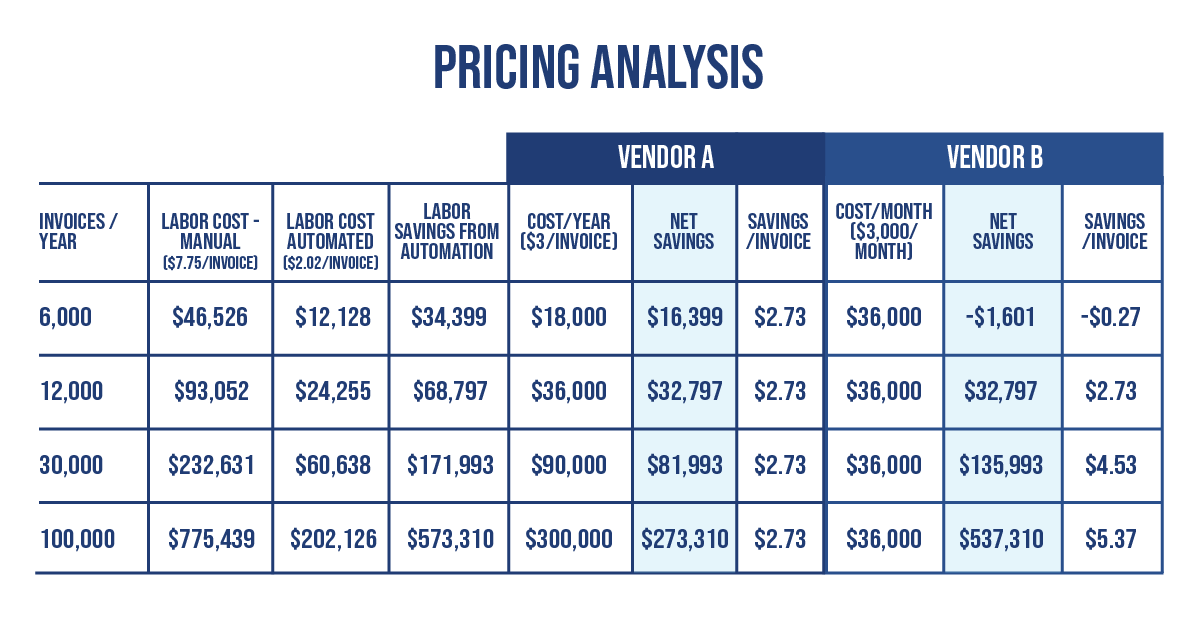
Two trends are clear from the data:
- Paying a cost per invoice (Vendor A) provides more total savings for a small number of invoices. The net savings per invoice is the same, regardless of the number of invoices
- Using the monthly flat rate (Vendor B) provides more savings (in total and per invoice) as the number of invoices increases
When considering automation solutions, pay careful attention to the pricing structure and your current and projected future invoice volumes to ensure you maximize your savings.
We can now use this model to estimate the impact of AP automation costs and benefits.
Implementation and ERP integration
The costs of implementing an AP automation platform and integrating it with an ERP or accounting software can vary widely. Here are two factors to consider:
- On-premise solutions may include significant software and hardware costs
- If an AP automation solution requires extensive training, the implementation will be more difficult
Be sure that when considering vendors, the implementation and integration costs are transparent and accurate. In practice, these one-time costs would apply in the first year of implementation and would have to be offset by future savings.
Paper processing and storage
Here’s a simple way to get a ballpark estimate of your AP paper storage costs: count the number of filing cabinets in your AP department, multiply by 6 square feet, then multiply that total by your rent per square foot. Note that AP automation may not immediately offset paper storage costs – digitizing and archiving or shredding those paper records will take time.
Human error and duplicate invoices
The APQC reports that the invoice error rate for companies using manual invoice processing is 2% of total invoices. Based on a conservative estimate that AP staff will need to spend at least 1 hour correcting errors, the labor cost of human error can be high, as seen below.
Note that automation won’t eliminate human error, but it can improve invoice capture accuracy and reduce the error rate. According to the APQC, companies that automate invoice processing experience a 0.8% human error rate. Automation may also reduce the time required to fix errors, but this analysis assumes that 1 hour is required to correct errors using either processing method.
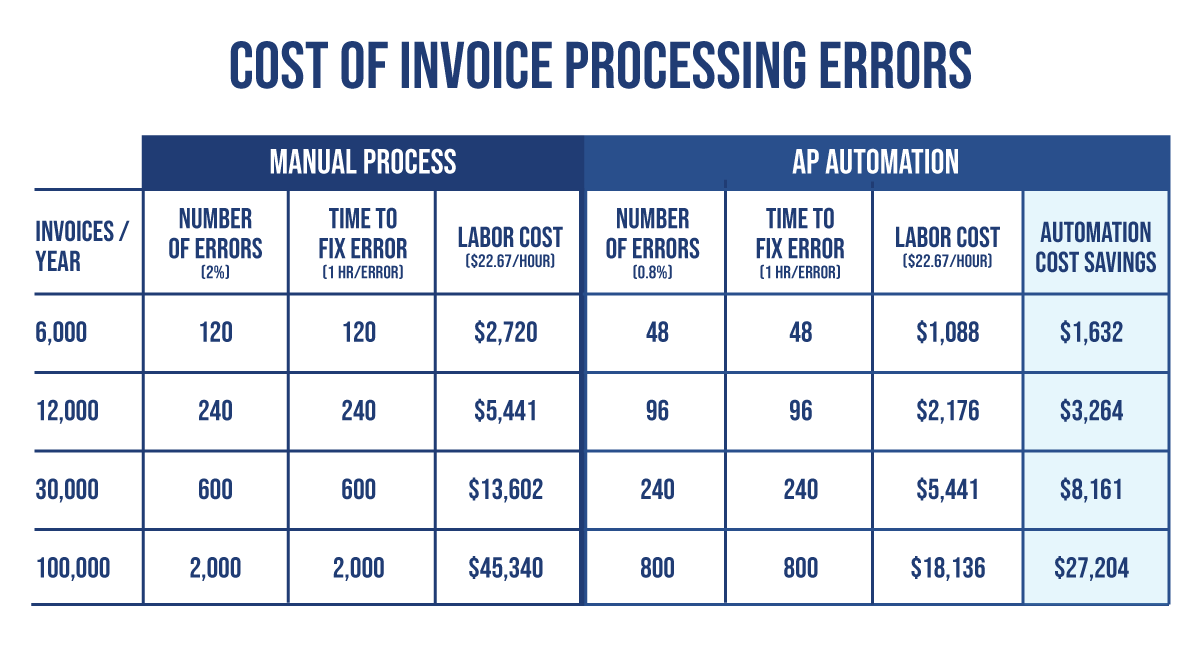
If a fully automated system can fix errors in less than an hour, the cost savings are even larger.
Thinking about fraud risk
Fraud can be a complex subject for business – after all, who wants to admit fraudsters have victimized them? As a CFO, you may be able to estimate how much your business is losing to fraud each year. AP automation solutions have great potential to reduce fraud through better controls, detection, and investigation. It’s a good litmus test of potential AP automation vendors to see how well they explain how their platforms can prevent fraud losses.
Addressing regulatory compliance
Regulatory fees and fines are similar to fraud, because it’s difficult to predict their impact on accounts payable costs. In general, AP automation systems implement and enforce internal controls and reduce the risk of non-compliance. Automation can also facilitate more frequent internal audits to ensure compliance. As with fraud prevention, it’s a good idea to ask potential AP vendors about how their platform enforces internal controls and maintains a complete AP audit trail.
How to use this analysis
Armed with this model, you have everything you need to estimate the real costs and benefits of AP automation for your business and to make informed decisions about which vendor and platform you choose.
Use the variables discussed above to perform an analysis of your current AP costs, the estimated savings from AP automation, and the cost to implement a new system. Compare the cost savings to your AP platform’s cost, to determine how long it will take to recover your automation investment.
Stampli: The Logical Choice for AP Automation
Stampli is the industry-leading AP automation solution and the perfect solution for realizing cost savings for invoice processing.
A recognized AP and invoice automation leader, Stampli is ranked #1 for Implementation, Usability, Relationship, and Results in the 2022 G2 Report for AP Automation and was named “Best Automation and Invoice Management Software in 2021” in the 2021 FinTech Awards by Wealth & Finance Magazine.
Stampli is powerful, easy to implement, and integrates with most major ERP and accounting systems. Consider these benefits:
- Automated invoice data capture, coding, and verification
- Monthly service fee, no long-term contracts
- Award-winning customer success team
- Scalable to meet your growing invoice volumes
- Reduce errors and fraud and enforce regulatory compliance
With most Stampli implementations taking place in days, not weeks or months, you can save time and money on accounts payable processes almost instantly.
Take the first step to optimizing your accounts payable. Contact Stampli today to set up a free demo.
